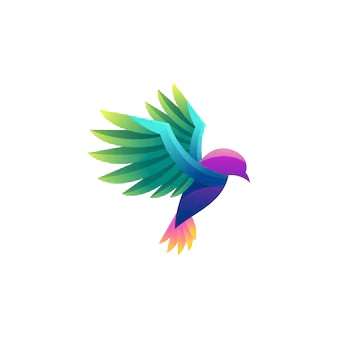
A visit to South Africa would be incomplete without a trip to the bush. Beyond the famed Big Five, South Africa’s birdlife offers incredible diversity and an enriching experience for birdwatchers. Birding tours are increasingly popular in the region, with prime hotspots like Kruger National Park, the southern Drakensberg, mKhuze Game Reserve, and the iSimangaliso Wetlands Park World Heritage Site.
Common birds you might encounter on a South African safari include the Yellow-billed Hornbill, Helmeted Guineafowl, and Burchell’s Sandgrouse. Birds such as the Red-eyed Dove and Natal Spurfowl are often heard before they are seen. Bird hides provide excellent opportunities to observe cormorants, herons, and other waterbirds, while the country’s four species of kingfishers are a delight to spot. Unique nests, like the large communal nest of the sociable weaver, add to the birding experience.
Birds like oxpeckers and cattle egrets are known for their symbiotic relationships with other animals, while the honeyguide is famous for leading people and animals to wild bee colonies. No safari is complete without sighting Africa’s most beautiful bird, the Lilac-breasted Roller. Here are some of the most coveted bird sightings for an unforgettable safari in South Africa.
1. African Fish Eagle
The African Fish Eagle is a majestic raptor and a favorite among birders and wildlife enthusiasts. With its white head, dark body, and yellow bill, it bears a resemblance to the American Bald Eagle. Found near large freshwater bodies in savannahs, grasslands, and wetlands, its sharp, wailing cry is iconic.
2. Bateleur
Named for its acrobatic flight displays, the Bateleur is a stunningly beautiful raptor with a distinctive appearance. It has dark, piercing eyes, a small hooked bill, and conspicuous red facial skin and feet. Found in savannah-woodland habitats and shrublands, juvenile bateleurs are brown and take up to eight years to develop their adult plumage.
3. Martial Eagle
The Martial Eagle, the largest eagle in Africa, is a powerful predator with a wingspan of up to seven feet. Its brown plumage and spotted white underparts make it recognizable. These eagles are ferocious hunters of mammals, reptiles, and birds but are endangered due to habitat loss and persecution.
4. Hammerkop
Named for its hammer-shaped head, the Hammerkop is a peculiar bird with brown plumage and a purplish iridescence. Found in wetland habitats, it forages for fish, amphibians, and insects. Its unique nest, often decorated with various items, is one of the largest structures built by any bird.
5. Secretarybird
The Secretarybird is a large raptor with crane-like legs and a dramatic erectile crest. It hunts on the ground, preying on small vertebrates and snakes. Endangered due to habitat destruction and human disturbance, this bird is a spectacular sight in grasslands and savannahs.
6. Blue Crane
The Blue Crane, South Africa’s national bird, is elegant with pale blue-gray plumage and long, trailing feathers. Near-endemic to South Africa, they inhabit open grasslands and agricultural areas. Their populations are declining due to habitat loss and persecution.
7. Southern Ground Hornbill
The largest species of the hornbill order, the Southern Ground Hornbill, has dark plumage, prominent red facial skin, and a deep, booming call. Found in savannahs, they hunt and forage on the ground and are known for their long eyelashes and impressive wingspan.
8. Common Ostrich
The Common Ostrich, the world’s largest bird, can reach up to nine feet in height. Flightless with long, powerful legs, ostriches inhabit open savannahs and deserts. They are the fastest-running birds, capable of speeds up to 44 miles per hour.
9. Marabou Stork
Known as “The Undertaker Bird,” the Marabou Stork is a large wading bird with a bare head, huge bill, and a distinctive gular sac. Found in savannahs and wetlands, these social birds often feed on carrion and have a somewhat sinister appearance.
10. Cape Vulture
The Cape Vulture, also known as the Cape Griffon, is a large scavenger with dirty-white plumage and a powerful bill. Vital for ecosystem health, they help dispose of carrion. Unfortunately, Cape Vultures are declining due to poisoning, habitat loss, and persecution.
Final Thoughts
Birding is an intrinsic component of any safari, adding a touch of resplendence to the adventure. Learning about the birds you encounter and their interactions with other animals and the environment creates a memorable and enriching experience and one that will no doubt draw you back to this southern gem of Africa.
